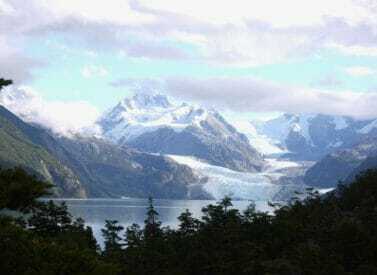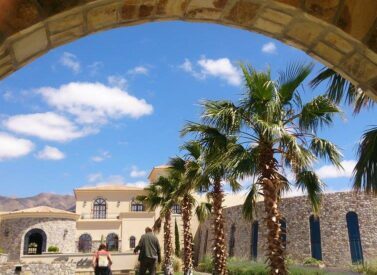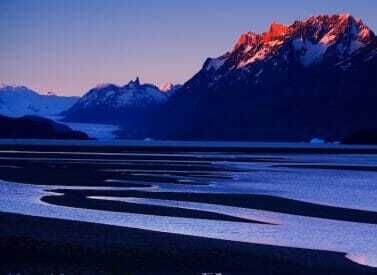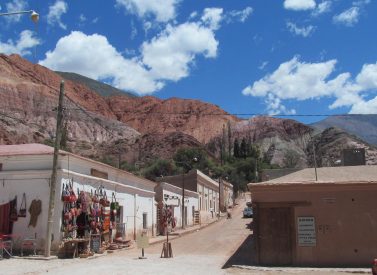
Puerto Montt Self-Drive: Volcanoes, Forests & Fjords
Puerto Montt opens Chile’s Lake District to the freedom and independence only a self-drive tour can satisfy.
Empty roads crisscross picturesque national parks covered with ancient forests, snow-capped volcanoes, and deep fjords. Driving at your own pace, you can choose your adventure and then recount the days in our specially selected hotels at night.
Nature is your companion throughout this Lake District highlights package. Leaving Puerto Montt, drive along the shores of Lago Llanquihue, Chile’s second-largest lake, stopping at historic towns en route, with markets, museums, and pioneering stories to tell. Alternatively, hike into the verdant woodland and get close to nature.
A trip to the iconic Osorno volcano is unmissable, as are the crystal-clear waters of Petrohué waterfalls and Lover’s Lake, Laguna de Los Enamorados.
Our suggested route — which you can follow with our pre-programmed GPS — leads to the Pacific fjord, Reloncaví, and its hub, Cochamó town.
This adventurers’ paradise features pristine landscapes ripe for trekking, kayaking, birdwatching, horseback riding, and more. Lago Tagua Tagua is the heartbeat of this unique corner of Chile’s Lake District.
Don’t miss the chance to contrast the refreshing and pure lake waters with a dip in nearby thermal baths. A final highlight is Alerce Andino National Park, where some specimens of the native Alerce tree have lived for more than 3,500 years.
Our self-drive tour is a circuit that ends back in Puerto Montt, leaving you refreshed for your next journey.
Trip Highlights
Print Share Download as PDF-
Self-drive through Chile’s stunning Lake District
-
Hike Osorno volcano
-
Petrohué waterfalls and Lover’s Lake
-
Visit historic lakeside towns
-
Touch Alerce trees more than 3,500 years old
-
Enjoy the dramatic splendour of Cochamó
-
Hot springs and refreshing lakes
-
Hike, kayak, and horse ride around Lago Tagua Tagua
We did so many excellent and fun activities on this trip its hard to pin it down to one but I think for both of us the most enjoyable day was the Cactus Valley trek in the Atacama.
Koleaar, Tailor Made Chile
Full Itinerary
Day 1: Puerto Montt — Puerto Varas – Las Casacadas
Your adventure begins in Puerto Montt, the capital of Chile’s Lake District. A rental car will be waiting for you at Puerto Montt airport. Land the same day and collect the car or spend the previous evening exploring Puerto Montt.
Puerto Montt
This port city is where Chile’s Lake District meets the sweet breezes of the Pacific Ocean. Famous for its gastronomy, Puerto Montt’s seafood is a speciality. Remember to take in its larch wood cathedral and views of Tenglo Island and Calbuco volcano. The market, craft fair, and Angelmó port are also worth a visit.
From the airport, you start your route, heading north towards Lago Llanquihue and its colonial towns, founded by German settlers in the 19th century. Several stop-offs are possible today as you drive clockwise around Lago Llanquihue, Chile’s second-largest lake. The final destination is the small village of Las Cascadas, named after the impressive nearby waterfalls.
First is the small national park at Lahuen Ñadi, close to the airport and home to ancient alerces, larch trees. Next, continue driving, in this order, to Puerto Varas, Frutillar, and Puerto Octay.
Pro tip: You’ll need Chilean Pesos to pay for services on your route. Puerto Montt and Puerto Varas have ATMs and money exchange booths, and Frutillar has an ATM.
Puerto Varas
Puerto Varas is famed for its views over Lago Llanquihue and Osorno volcano, plus its wooden architecture. Its history dates back to 1852, when Vicente Pérez Rosales built a ship on the shores of the lake, from where he would explore the waters.
The following year, German immigrants started to arrive in the area as part of a Chilean government colonisation project under Manuel Montt’s presidency (1851-1861). Puerto Varas grew as a tourist destination thanks to its position among nature. An earthquake in 1960 flattened many of the original wooden buildings, leading to the city’s mix of historical and modern architecture.
Puerto Montt Attractions
Attractions include Chilean handicrafts at the Feria Artesenal, full of all things llama, alpaca, and lapis lazuli. A stroll along the lakeside path, dotted with statues, and the art gallery Museo Pablo Fierro are also popular attractions. Unmissable is the Iglesia del Sagrado Corazón (Sacred Heart Church), Puerto Varas’ iconic building, built in the style of a German church from the Black Forest. For those with time, the Kunstgarten Arts and Cultural Centre has beautiful gardens with great lake views as well as a rotating gallery of works.
Frutillar
Nestled on Lago Llanquihue’s western shores lies Frutillar. A German Colonial Museum records the town’s history, seen in the German-style buildings that give Frutillar its character.
The catholic church, La Iglesia Immaculada Concepción, is a highlight. It’s worth checking for performances at the lakeside theatre, Teatro del Lago, where plays and concerts occur over water with Osorno volcano as a backdrop. Oh, and don’t forget to check the town’s black sand beaches.
Our last colonial town is Puerto Octay, with its museum, Christian cemetery, and museum dedicated to remembering the colonisation of the area. From here, continue the last part of the self-drive day by heading to your hotel in the village of Las Cascadas.
Approx. driving time: 1.5-2 hours
Approx. driving distance: 46 miles / 75km
Day 2: Las Cascadas — Osorno Volcano — Petrohué Waterfalls (B)
Today, there is less driving and more time among the natural beauty of Chile’s Lake District. We recommend heading into Vicente Peréz Rosales National Park.
A road leads you through dense native forest to the ski station located on Osorno volcano. Hike around this snow-capped mountain (ask about possible routes; some require guides) with its spectacular views. There are well-marked walks to take you into the forest, the foot of the volcano, parallel to Lago Todos los Santos, or towards the crater. A complete circuit may take 4-7 hours, depending on conditions. The summit requires an ice axe and crampons, and an early start.
Whichever way you visit Osorno, the adventure continues. The road continues towards the Andes mountains as you pass Ensenada, almost completing the 360-loop of Lago Llanquihue. Next, head east towards Petrohué and Lake Lago Todos los Santos.
Petrohué
You’ll pass one of the highlights on the way: the waterfalls of Petrohué and the nearby lover’s lake, or Laguna de Los Enamorados. The Petrohué waterfalls gush and thrash through the countryside, a marked contrast to the peace and tranquillity surrounding the clear waters at Lover’s Lake.
Once you’ve had your fill of this beautiful area, it’s a short drive to the small village of Petrohué, located on the shores of the picturesque, emerald-coloured Lago Todos los Santos.
In Petrohué, the Museo Pioneros has a small collection of photos that chronicle the area, important local characters, and some old fishing machinery. It’s worth a quick visit, if there is time, before settling into your hotel for the evening.
Pro tip: Be prepared: have a raincoat at hand, and beware horseflies in January/February. Horseflies are drawn to dark clothes; brighter clothing helps avoid them.
Approx. driving time: 45 minutes
Approx. driving distance: 25 miles / 35 km
Day 3: Petrohué — Cochamó — Puelo (B)
Today you head deep into the Chilean Lake District area, driving on deserted country roads which deliver stunning panoramas. The Pacific Fjord Reloncaví is your companion today as you enter the national reserve, Reserva Nacional Llanquihue.
First, you backtrack yesterday’s short drive — feel free to stop once more at the waterfalls and Lover’s Lake — and then head south on the road to Puelo.
Your journey is pocked with exquisite lookout points, rivers, and mountains. Be sure to take time to leave the car, drink it all in, and take photos. Around two-thirds through the drive, you’ll arrive at Cochamó. Just before the town, enjoy the Toboganes de la Junta, waterfalls that cascade over smoothed geological formations.
Hikes, thermal springs, lake trips, and more surround Cochamó. We can add extra time and trips here if desired.
Leaving Cochamó, take a gravel road along the shores of Fjord Reloncaví to Puelo, a small town of around 800 inhabitants. A river of the same name has cut a valley into the mountains here, travelling all the way from Argentina. This glacial feature has once more created a natural paradise in the Lake District, this time part of Hornopiren National Park.
Puelo
Puelo has lovely views of Yates Volcano and is popular with anglers. Its pristine landscapes make it a top spot for trekking, climbing, horseback riding, kayaking, and birdwatching.
Other attractions include:
- Trips on Lago Tagua Tagua
- Horseback riding in the Ventisquero Valley
- Visiting the mountain villages of Llanada Grande and Segundo Corral
- Hiking in the local forests and mountains
- Thermal baths at Termas del Sol
Whatever you choose, we’ve selected a comfortable lodge for your stay tonight.
Approx. driving time: 2 hours
Approx. driving distance: 55 miles / 90 km
Day 4: Puelo (B)
You have a free day to choose your activity in Puelo.
Return to your lodge for the evening.
Day 5: Puelo — Lenca — Alerce Andino (B)
Waving goodbye to Puelo, you head west along Fjord Reloncaví, aiming for the ferry crossing at Caleta Puelche. Don’t forget to stop at the lookout before you get there, the Mirador Estuario del Reloncavi.
The ferry crossing takes around 30 minutes, a lovely experience that helps the traveller understand how water defines the area. You drive off at Caleta Arena, but take care not to miss out on the seafood empanadas sold here.
Your target today is the village of Lenca, where we have reserved a cabin. Check-in and enjoy the nearby Alerce Andino National Park that protects the native Alerce (larch) tree. This tree only grows in this area of Chile and Argentina. Some of the trees are more than 3,500 years old, some of the oldest living organisms in the world.
Trekking in Alerce Andino
Alerce Andino National Park, located between the mountains and the Strait of Reloncaví, is around 39,255 hectares, with mountains, deep gorges, and several lakes.
Register with the park rangers on arrival and choose your walk. The description below is for around 6 miles/10 km in total. Walk about two miles on the main trail to a viewpoint over waterfalls fed by meltwater from Calbuco volcano. Alerce trees in this area are estimated to be around 2,000 years old.
A trail then takes you to the Chaica River, which flows into the Pacific Ocean. Keep hiking, and you’ll come to the Triangulo lagoon, set among a temperate rainforest home to many ferns and mosses. This is an excellent spot for a picnic lunch among nature.
The walk returns to the park entrance. Get the car and retrace your route to your cabin in Lenca.
Approx. driving time: 2-3 hours
Approx. driving distance: 40 miles / 65 km
Day 6: Lenca — Puerto Montt (B)
From Lenca, continue north along the Pacific Coast to Puerto Montt, and you drop off the car at the airport.
Approx. driving time: 1-2 hours
Approx. driving distance: 37 miles / 60 km
Prices From $1,500 / £1,220 per person
What's Included?
Accommodation in 3-star hotels with ensuite bathrooms, meals as listed, six days car rental with unlimited km, airport service charge, pre-programmed GPS, car insurance (USD 240 excess approx.)
Suggested accommodation (or similar): Hostal Zapato Amarillo (Puerto Octay), Petrohue Lodge (Petrohue), Andes Lodge (Puelo, 2 nights), Campo Santy (Lenca)
What's Not Included?
Flights (we can help to look for flights), services not mentioned, guides, meals not listed, extras, personal items, travel insurance, alcoholic or soft drinks, tips
Accommodation
Hotels and lodges 2-3* are chosen for their character, some are cabins, often built of the local wood to give charm. They are comfortable and not luxurious due to their location.
Upgrades possible (where available)
Tour Staff
If you choose to book a guide for any of the walks we can certainly organise that for you in advance. All our guides are qualified, local and English-speaking and will help you get the most out of your trip.
Guides have specialist knowledge of the areas you are visiting.
Meals
Almost all dietary requirements can be catered for if we are notified in advance, please ask for more information.
Breakfasts at the hotels will generally consist of hot drinks, toast, jams, cereals, fruits and eggs.
Some villages have restaurants for meals. Hotels chosen usually have meals available, too.
Note: In remote areas meals may vary depending on availability of certain items.
Activity Level
This trip is open to people with a penchant for exploring, with a positive attitude and outlook. The driving is remote and not always on paved roads.
Be prepared: have a raincoat at hand, and beware horseflies in January/February. Horseflies are drawn to dark clothes; brighter clothing helps avoid them.
Dust can be a problem and quite extremes of temperature, warm in the day and cold at night the moment the sun goes down.
You don’t need a specific fitness level as such, but to be adaptable, enjoy being outdoors and viewing sites etc.
We can adapt the trip to be more active if you wish.
Practical Information
An introduction to Chile
Chile is the land of contrasts, from verdant vineyards to driest desert, deep fjords and towering glaciated volcanoes.
A narrow but incredibly long, snake-like country, Chile’s unusual geography features more than 5,000km of South Pacific Ocean coast. The country is almost 4,400km long but barely more than 160km at its widest.
It is best divided into general regions, all of which offer spectacular landscapes and identities of their own.
This variety means Chile is the land where almost every activity is possible. Hiking, biking, rafting and kayaking.
Or climbing, cruising, fishing, horse riding, wine tasting.
Or simply eating great food, relaxing and exploring.
Geography of Chile
Patagonia
Trekking heaven. Paine National Park lies in Patagonia and features some of the best trekking in South America. With no altitude worries here, hikers enjoy an unrivalled mix of access to wild flora and fauna that exists in this massif. It is at once windswept, and then balmy. Paine National Park is a must see for walkers visiting South America.
Northern Patagonia is the least densely populated part of the country – spectacular virgin scenery make this a hidden gem and superb area for trekking, boating and horse riding.
And that’s before you think about possibly cruising through fjords, or kayaking them, flying to Antartica or staying at a working hacienda.
Easter Island
Iconic, Easter Island is an archaeological treasure. Here you will find the famous Moai stone statues, as well as caves and rocks decorated with etched petroglyphs and painted pictographs.
Northern Chile
Northern Chile features the Atacama, the driest desert with the clearest skies in the world, is alive with active volcanoes replete with spitting geysers mixed with archaeological wonders and fantastic rock formations.
Central Chile is the heart of Chile and includes the capital Santiago. With its Mediterranean climate of hot dry summers and mild wet winters, this central valley produces some of South America’s finest wines, Colchagua Valley to name but one.
Here, the Andean mountain chain soars more than 6,000m above sea level. Chile’s traditional symbols such as huaso (cowboy) and cueca (national dance) originate here, an area which is rich in agriculture and produces most of Chile’s export fruit.
In winter, skiers are attracted to this tasting the promise of some fabulous snow on the huge peaks which overlook Santiago.
Southern Chile and the Lake District
Lush and verdant, The Lake District area is the place to climb snow-capped volcanoes by day while relaxing next to stunning glacial lakes by evening. You can walk, bike, raft, cruise and drive your way around this beautiful region.
Central, southern and Patagonia Andes all present different challenges to mountaineers and trekkers. Options are varied in the central Andes with many of the Patagonian peaks remaining unexplored and unsummitted.
Weather in Chile
Chile’s climate varies greatly, owing to its sheer length, variation of terrain and varying altitudes and latitudes.
Lake District and Patagonia
In the south of Chile, here temperatures drop a little compared to the rest of Chile.
It can be better to go in the Austral summer (Oct-March). Daylight hours are much longer at this time, with Nov-Feb being popular times to visit. October and March can be very colourful and vivid with less visitors, but weather can be more blustery.
In Patagonia, the weather is, putting it mildly, variable, and variable on a daily basis. It is usually cool and windy all year round but seldom does the temperature fall below freezing point. Some days start with snow and end in balmy sunshine. It is always interesting, and can range from 10°C-20°C in the summer, although the wind can make it feel chilly.
The vast unbroken stretch of ocean to the west and south of the South American continent leaves the Patagonian Andes very exposed to the saturated winds that circle the Antarctic landmass. Also the South Patagonia Ice field influence makes the weather hard to predict. In spring or early summer fine weather may deteriorate almost without warning, bringing rains and eventually snow. Even in summer (Dec-Mar) you should come prepared to find cold, strong winds (up to 130 km/hr) and rainfalls. The summer’s average temperature is 11ºC/52ºF (24ºC max, 2ºC min).
Winter visits to these southern areas are possible, but many hotels close and not all trips are possible. Daylight hours can be very short, but the lack of visitors can greatly improve chances of seeing wildlife in parks such as Paine.
The Lake District’s temperate climate can be said to resemble that of the UK, with rain possible but also enjoying long spells of fine, fresh weather in the summer (Oct-March).
Easter Island
Although sub-tropical and essentially a year-round destination, Dec-Feb are the most popular times to visit Easter Island as it is summer there and temperatures average 24°C. There can be colder days and it can be humid too.
The winter months (Jun-Oct) on Easter Island are not overly cold, but they can be cool. The average low temperature is 16°C but there is usually a wind at this time of year that makes the temperature feel cooler than it really is.
The wind rarely stops blowing at this time of year.
Northern Chile
The north of the country lies in the tropical zone, but in the main is desert. It is dry and sunny all year round, but does get cold at night time in the high altitude areas.
In winter (June-Aug) the average daytime temperature is 22°C (72°F) and by night 4°C (39°F), descending to -2°C (28°F) in extreme cases.
During summer (Jan-Mar) the temperature fluctuates between 27°C (81°F) and a minimum of 16°C (61°F) at night, reaching maximums of 32°C (90°F), with occasional showers.
Central Valley
The wine growers love the central valley, which has a suitable Mediterranean climate of hot dry summers (Nov-March).
Then, temperatures range from 17°C in the evening and can go up to 30°C inland. It is cooler during the day on the coast.
During winter (May-Sept), which is essentially mild and wet, temperatures inland can vary from 5°C to 18°C during the day, and a bit warmer on the coast.
Autumn (Mar-April) and Spring (Oct-Nov) are lovely times to visit, although hotels in Santiago can book out in March, October and November, as it is conference season.
ATOL holiday protection
Andean Trails has 25 years of experience of putting together the best South America holidays.
We pay a fee to the CAA for every licensable passenger we book since we hold an Air Travel Organiser’s Licence granted by the Civil Aviation Authority. In the unlikely event of our insolvency, the CAA will ensure that you are not stranded abroad and will arrange to refund any money you have paid to us for an advance booking.
We also offer ATOL (Civil Aviation Authority) protected holidays to give our customers peace of mind when booking and travelling.
When you buy an ATOL protected air holiday package from Andean Trails Ltd you will receive a Confirmation Invoice from us confirming your arrangements and your protection under our Air Travel Organiser’s Licence number 6275.
You can read more about ATOL, who is covered and what protections you have if not ATOL-covered, on our ATOL page.
What is ATOL?
The CAA’s ATOL scheme offers protection to your money and your holiday if you book with us. Not everybody is covered (see ‘Who is covered?’ for more), as you must purchase an ‘air package holiday’ with Andean Trails to be protected.
And ‘air package holiday’ is defined as including a flight and some ground services (hotel, transfer, trek etc). This is also known as an ‘ATOL-protected holiday’.
Who is covered?
To be covered by ATOL, you must book a flight and some ground services with us and be from the UK. If you are from the UK and only book ground services and no flights, you are not covered by ATOL (see below for more on how non-ATOL clients are covered).
If you are outside the UK and buy flights with us, you will be ATOL protected IF any of the flights booked with Andean Trails touches/stops in the UK at any point during your holiday package booked with us.
If you buy your flights elsewhere, please check with that agent if you are ATOL protected. Be careful with online flight purchases and make sure you know what protection you have, if any, before paying for flights.
Not all holiday or travel services offered and sold by us will be protected by the ATOL scheme. Please ask us to confirm what protection may apply to your booking.
For land only holidays not involving any air travel, in accordance with “The Package Travel, Package Holidays and Package Tours Regulations 1992”, all UK passengers booking with Andean Trails Ltd. are fully protected for the initial deposit and subsequently the balance of all money paid to us, arising from cancellation or curtailment of travel arrangements due to the insolvency of Andean Trails.
I’m not ATOL covered, what protection do I have?
If you are not ATOL covered, any payments you make to us go to a Trust account.
We can only access this money once your tour has been completed, meaning that if anything happens to Andean Trails Limited while you are on holiday, then your money is secure and you can either complete the trip or be able to make it home.
If you pay for your holiday with a credit card, some offer payment protection – please check with your cardholder.
You also should have cancellation protection written into your insurance (which we recommend you have at the time of booking) in case you need to cancel.
Kit list
Good kit is vital for every trip.
Book with Andean Trails and get 15% off Páramo’s fantastic ethical and high performance outdoor gear.
Overview
Chile has a wide range of climates from arid deserts to bracingly cold Patagonia.
When planning for these changeable climatic conditions you will encounter across Chile, layering is the most practical and versatile clothing system.
The sun is very strong throughout the country, so good sun cream, a hat and sunglasses are vital.
It can also get very cold at night time especially in the mountains. Jumpers, fleeces and warms hats – which you can buy there – are also essential.
Give plenty of thought to kit selection, and try to keep weight down.
Below is a more detailed guide.
Detailed kit list
- Medium weight parka or a down jacket.
- Waterproof jacket and trousers. The jacket needs to be water proof and roomy. Side-zip pants are recommended.
- 2-3 long-sleeve shirts – no cotton
- 2-3 short-sleeve T-shirts – no cotton
- 2 pair of hiking trousers- cotton or synthetic material (no jeans)
- 1 fleece or sweat trousers (for cold evenings)
- 2 pair hiking shorts
- Long thermals – synthetic or wool – light to medium weight top & bottoms.
- 2-3 mid-weight (wool or synthetic) socks.
- 2-3 liner socks if needed
- Athletic-type socks, several pairs, city use
- Hiking boots that are waterproof and well broken-in.
- Running/tennis shoes or sandals are very comfortable when you are in cities
- 1 lightweight wool sweater or windproof fleece
- 1 wool or synthetic warm hat.
- 1 light sun hat with a wide brim.
- 1 pair of medium-weight wool or synthetic gloves
- Broad-brimmed sunhat, essential.
- Sunglasses with UV filter.
- Scarf for cold.
- Bandanna – to protect neck from strong sun.
- Daypack (at least 30 litres). Comfortable and with waterproof lining or cover.
- Water bottle (2 litres approx.) & purification tablets.
- Personal first-aid kit to include: painkillers, plasters (band-aids), moleskin, anti-biotic cream, general antibiotics (ask your GP), after-bite (tiger balm), anti-diarrhoea tablets, throat lozenges, re-hydration salts & personal medication.
- Insect repellent (just in case)
- Towel & wash-kit.
- Wet Wipes/antiseptic hand-wash cream.
- Sunscreen (factor 30+) and lip salve.
- Head-lamp (plus spare bulb and batteries).
- Penknife.
- Travel alarm clock.
- Plastic bags – ‘Zip-loc’ & tough bin liners.
- Camera and film / memory cards (take at least twice the amount you think you will need!).
- Book, e-book, mp3 player/ipod or other to help pass the time.
- Binoculars.
- Spanish/English phrasebook.
- Extra snacks i.e. cereal bars or favourite chocolate bars.
Miscellaneous others
- Money belt.
- Passport.
- U.S. dollars cash, mixed-denomination notes, undamaged and unmarked.
- ATM cash/credit card.
- Any inoculation certificates.
- Personal & medical insurance certificates.
- Presents e.g. Postcards from home.
- Comfortable clothes for travel, smart clothes for night life, especially in big cities.
An introduction to Chile
Chile is the land of contrasts, from verdant vineyards to driest desert, deep fjords and towering glaciated volcanoes.
A narrow but incredibly long, snake-like country, Chile’s unusual geography features more than 5,000km of South Pacific Ocean coast. The country is almost 4,400km long but barely more than 160km at its widest.
It is best divided into general regions, all of which offer spectacular landscapes and identities of their own.
This variety means Chile is the land where almost every activity is possible. Hiking, biking, rafting and kayaking.
Or climbing, cruising, fishing, horse riding, wine tasting.
Or simply eating great food, relaxing and exploring.
Geography of Chile
Patagonia
Trekking heaven. Paine National Park lies in Patagonia and features some of the best trekking in South America. With no altitude worries here, hikers enjoy an unrivalled mix of access to wild flora and fauna that exists in this massif. It is at once windswept, and then balmy. Paine National Park is a must see for walkers visiting South America.
Northern Patagonia is the least densely populated part of the country – spectacular virgin scenery make this a hidden gem and superb area for trekking, boating and horse riding.
And that’s before you think about possibly cruising through fjords, or kayaking them, flying to Antartica or staying at a working hacienda.
Easter Island
Iconic, Easter Island is an archaeological treasure. Here you will find the famous Moai stone statues, as well as caves and rocks decorated with etched petroglyphs and painted pictographs.
Northern Chile
Northern Chile features the Atacama, the driest desert with the clearest skies in the world, is alive with active volcanoes replete with spitting geysers mixed with archaeological wonders and fantastic rock formations.
Central Chile is the heart of Chile and includes the capital Santiago. With its Mediterranean climate of hot dry summers and mild wet winters, this central valley produces some of South America’s finest wines, Colchagua Valley to name but one.
Here, the Andean mountain chain soars more than 6,000m above sea level. Chile’s traditional symbols such as huaso (cowboy) and cueca (national dance) originate here, an area which is rich in agriculture and produces most of Chile’s export fruit.
In winter, skiers are attracted to this tasting the promise of some fabulous snow on the huge peaks which overlook Santiago.
Southern Chile and the Lake District
Lush and verdant, The Lake District area is the place to climb snow-capped volcanoes by day while relaxing next to stunning glacial lakes by evening. You can walk, bike, raft, cruise and drive your way around this beautiful region.
Central, southern and Patagonia Andes all present different challenges to mountaineers and trekkers. Options are varied in the central Andes with many of the Patagonian peaks remaining unexplored and unsummitted.
Weather in Chilean Patagonia
Chilean Patagonia, in the south of the country, has a climate with lower temperatures compared to the rest of Chile.
Lake District and Patagonia
It can be better to go in the Austral summer (Oct-March). Daylight hours are much longer at this time, with Nov-Feb being popular times to visit. October and March can be very colourful and vivid with less visitors, but weather can be more blustery.
In Patagonia, the weather is, putting it mildly, variable, and variable on a daily basis. It is usually cool and windy all year round but seldom does the temperature fall below freezing point. Some days start with snow and end in balmy sunshine. It is always interesting, and can range from 10°C-20°C in the summer, although the wind can make it feel chilly.
The vast unbroken stretch of ocean to the west and south of the South American continent leaves the Patagonian Andes very exposed to the saturated winds that circle the Antarctic landmass. Also the South Patagonia Ice field influence makes the weather hard to predict. In spring or early summer fine weather may deteriorate almost without warning, bringing rains and eventually snow. Even in summer (Dec-Mar) you should come prepared to find cold, strong winds (up to 130 km/hr) and rainfalls. The summer’s average temperature is 11ºC/52ºF (24ºC max, 2ºC min).
Winter visits to these southern areas are possible, but many hotels close and not all trips are possible. Daylight hours can be very short, but the lack of visitors can greatly improve chances of seeing wildlife in parks such as Paine.
The Lake District’s temperate climate can be said to resemble that of the UK, with rain possible but also enjoying long spells of fine, fresh weather in the summer (Oct-March).
ATOL protection
Andean Trails has 25 years of experience of putting together the best South America holidays.
We pay a fee to the CAA for every licensable passenger we book since we hold an Air Travel Organiser’s Licence granted by the Civil Aviation Authority. In the unlikely event of our insolvency, the CAA will ensure that you are not stranded abroad and will arrange to refund any money you have paid to us for an advance booking.
We also offer ATOL (Civil Aviation Authority) protected holidays to give our customers peace of mind when booking and travelling.
When you buy an ATOL protected air holiday package from Andean Trails Ltd you will receive a Confirmation Invoice from us confirming your arrangements and your protection under our Air Travel Organiser’s Licence number 6275.
You can read more about ATOL, who is covered and what protections you have if not ATOL-covered, on our ATOL page.
What is ATOL?
The CAA’s ATOL scheme offers protection to your money and your holiday if you book with us. Not everybody is covered (see ‘Who is covered?’ for more), as you must purchase an ‘air package holiday’ with Andean Trails to be protected.
And ‘air package holiday’ is defined as including a flight and some ground services (hotel, transfer, trek etc). This is also known as an ‘ATOL-protected holiday’.
Who is covered?
To be covered by ATOL, you must book a flight and some ground services with us and be from the UK. If you are from the UK and only book ground services and no flights, you are not covered by ATOL (see below for more on how non-ATOL clients are covered).
If you are outside the UK and buy flights with us, you will be ATOL protected IF any of the flights booked with Andean Trails touches/stops in the UK at any point during your holiday package booked with us.
If you buy your flights elsewhere, please check with that agent if you are ATOL protected. Be careful with online flight purchases and make sure you know what protection you have, if any, before paying for flights.
Not all holiday or travel services offered and sold by us will be protected by the ATOL scheme. Please ask us to confirm what protection may apply to your booking.
For land only holidays not involving any air travel, in accordance with “The Package Travel, Package Holidays and Package Tours Regulations 1992”, all UK passengers booking with Andean Trails Ltd. are fully protected for the initial deposit and subsequently the balance of all money paid to us, arising from cancellation or curtailment of travel arrangements due to the insolvency of Andean Trails.
I’m not ATOL covered, what protection do I have?
If you are not ATOL covered, any payments you make to us go to a Trust account.
We can only access this money once your tour has been completed, meaning that if anything happens to Andean Trails Limited while you are on holiday, then your money is secure and you can either complete the trip or be able to make it home.
If you pay for your holiday with a credit card, some offer payment protection – please check with your cardholder.
You also should have cancellation protection written into your insurance (which we recommend you have at the time of booking) in case you need to cancel.
Kit list, Chile General
Good kit is vital for every trip.
Book with Andean Trails and get 15% off Páramo’s fantastic ethical and high performance outdoor gear.
Overview
Chile has a wide range of climates from arid deserts to bracingly cold Patagonia.
When planning for these changeable climatic conditions you will encounter across Chile, layering is the most practical and versatile clothing system.
The sun is very strong throughout the country, so good sun cream, a hat and sunglasses are vital.
It can also get very cold at night time especially in the mountains. Jumpers, fleeces and warms hats – which you can buy there – are also essential.
Give plenty of thought to kit selection, and try to keep weight down.
Below is a more detailed guide.
Detailed kit list
- Medium weight parka or a down jacket.
- Waterproof jacket and trousers. The jacket needs to be water proof and roomy. Side-zip pants are recommended.
- 2-3 long-sleeve shirts – no cotton
- 2-3 short-sleeve T-shirts – no cotton
- 2 pair of hiking trousers- cotton or synthetic material (no jeans)
- 1 fleece or sweat trousers (for cold evenings)
- 2 pair hiking shorts
- Long thermals – synthetic or wool – light to medium weight top & bottoms.
- 2-3 mid-weight (wool or synthetic) socks.
- 2-3 liner socks if needed
- Athletic-type socks, several pairs, city use
- Hiking boots that are waterproof and well broken-in.
- Running/tennis shoes or sandals are very comfortable when you are in cities
- 1 lightweight wool sweater or windproof fleece
- 1 wool or synthetic warm hat.
- 1 light sun hat with a wide brim.
- 1 pair of medium-weight wool or synthetic gloves
- Broad-brimmed sunhat, essential.
- Sunglasses with UV filter.
- Scarf for cold.
- Bandanna – to protect neck from strong sun.
- Daypack (at least 30 litres). Comfortable and with waterproof lining or cover.
- Water bottle (2 litres approx.) & purification tablets.
- Personal first-aid kit to include: painkillers, plasters (band-aids), moleskin, anti-biotic cream, general antibiotics (ask your GP), after-bite (tiger balm), anti-diarrhoea tablets, throat lozenges, re-hydration salts & personal medication.
- Insect repellent (just in case)
- Towel & wash-kit.
- Wet Wipes/antiseptic hand-wash cream.
- Sunscreen (factor 30+) and lip salve.
- Head-lamp (plus spare bulb and batteries).
- Penknife.
- Travel alarm clock.
- Plastic bags – ‘Zip-loc’ & tough bin liners.
- Camera and film / memory cards (take at least twice the amount you think you will need!).
- Book, e-book, mp3 player/ipod or other to help pass the time.
- Binoculars.
- Spanish/English phrasebook.
- Extra snacks i.e. cereal bars or favourite chocolate bars.
Miscellaneous others
- Money belt.
- Passport.
- U.S. dollars cash, mixed-denomination notes, undamaged and unmarked.
- ATM cash/credit card.
- Any inoculation certificates.
- Personal & medical insurance certificates.
- Presents e.g. Postcards from home.
- Comfortable clothes for travel, smart clothes for night life, especially in big cities.
Aysen, Chile
The Aysen region is one of the great undiscovered destinations of Chilean Patagonia.
Here you will find the world renowned white-water of the Futaleufu river, the marble caves on Lake General Carrera, the San Rafael Glacier, the Quelat Hanging Glacier and stunning scenery.
This part of the country is the least densely populated, so if you want to get away from the crowds this is the place to come.
Access has always been difficult to the region – the principal airport Balmaceda and it was only opened up less than 30 years ago, with the construction of the Austral Road from north to south.
Chilean Patagonia
Chilean Patagonia is a pristine wilderness of fjords, glaciers, plains, mountains and forests.
Southern Patagonia’s main attraction is the Torres del Paine National park. The granite spires attract many visitors to what some have called the 8th Wonder of the World. The park is a trekkers paradise with two classic treks, the Paine W and the Paine Circuit.
Northern Patagonia, the Aysen region, is one of the least populated parts of the country and is blessed with spectacular countryside.
The main airport is Balmaceda near the city of Coyhaique and must see places include Lake General Carrera and the Marble Caves, The San Rafael Glacier, the Quelat Hanging Glacier as well as driving the Austral Road.
The Futaleufu River is a must for white water enthusiasts.
The region also offers great horseback opportunities as well as kayaking ones. Nature enthusiasts can admire the impressive scenery, imposing glaciers and fascinating wildlife and flora.
Puerto Natales, Chile
Puerto Natales has the feel of a small frontier town.
Located on the banks of the Last Hope Sound this town had its origins in the shipping out of lamb from the local estancias.
Now it is the gateway to the Torres del Paine National Park and boasts an impressive selection of accommodation and restaurants.
Nearby attractions include the Milodon Cave and a full day sailing tour to the Balmaceda and Serrano Glaciers.
If you have time it’s worth trekking to the top of the nearby Dorotea hill for a spectacular view of the surrounding country side.
Chile Lake District
The Chilean Lake district is an area of snow capped volcanoes that overlooks pristine lakes surrounded by forests and rolling countryside.
The Northern gateway is Temuco Airport. A short drive is Villarrica Lake overlooked by the volcano of the same name. The monkey puzzle tree is autochthonous to the region and can be found all over particularly in Conguillio National park.
The town of Pucon is a great base from which to explore the nearby National parks, hot springs, Mapuche indigenous settlements and for the more adventurous rafting, canopy, trekking and climbing.
In the middle of the region you will find the private Huilo Huilo Biological Reserve, a protected area of Patagonian cold rain forest.
The Southern sector, whose gateway is Puerto Montt, is dominated by Lake Llanquihue and the conical Osorno Volcano.
A popular base is the town of Puerto Varas on the lake shore from where one can visit the local beauty spots or set off on adventures that include biking, kayak, trekking, rafting and much more.
This area combines very well with the Argentine Lake district and the towns of Bariloche and San Martin de Los Andes.
Chile, Atacama desert
The Atacama desert covers the northern quarter of Chile.
Said to be the driest in the world it is a melting pot of earthy tones ( red, yellow, purples, browns etc ), amazing rock formations, stunning mountains and volcanoes, flamingo speckled salt flats and some of the clearest skies on the planet.
San Pedro de Atacama is the ideal base to explore the nearby geysers, hot springs, salt flats, lakes, and at night be amazed by the star studded skies.
Those after adventure can pass the time trekking, biking, horse riding and exploring.
For a bit of culture the pre Columbian museum, colonial churches and pre Columbian archaeological sites will keep one fascinated and for the nature enthusiast the scenery, wildlife and environment won’t disappoint.
Prices From $1,500 / £1,220 per person
Approximate price per person, shared room basis
Depends on exact services booked
Minimum 2 people
Single supplement applies
Upgrades available


Dates & Prices
Prices From $1,500 / £1,220 per person
Approximate price per person, shared room basis
Depends on exact services booked
Minimum 2 people
Single supplement applies
Upgrades available
Can’t find what you’re looking for? Get in Touch
+44 (0)131 378 5593
+44 (0)131 554 6025



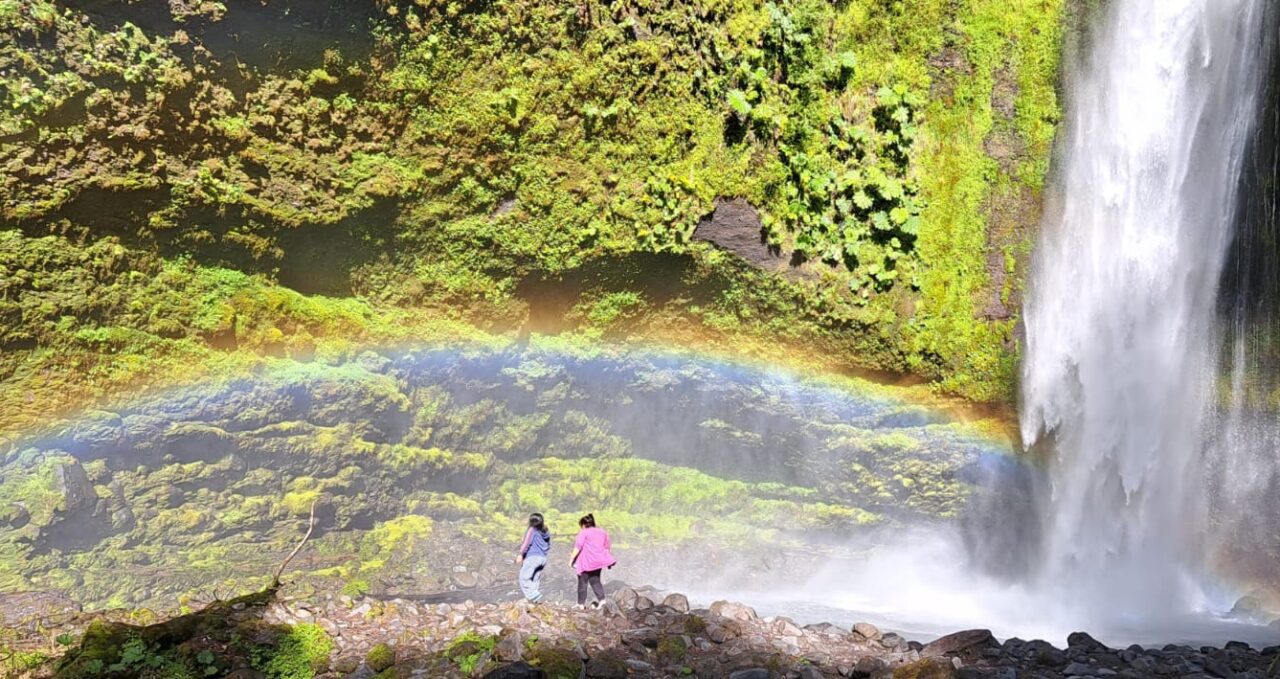
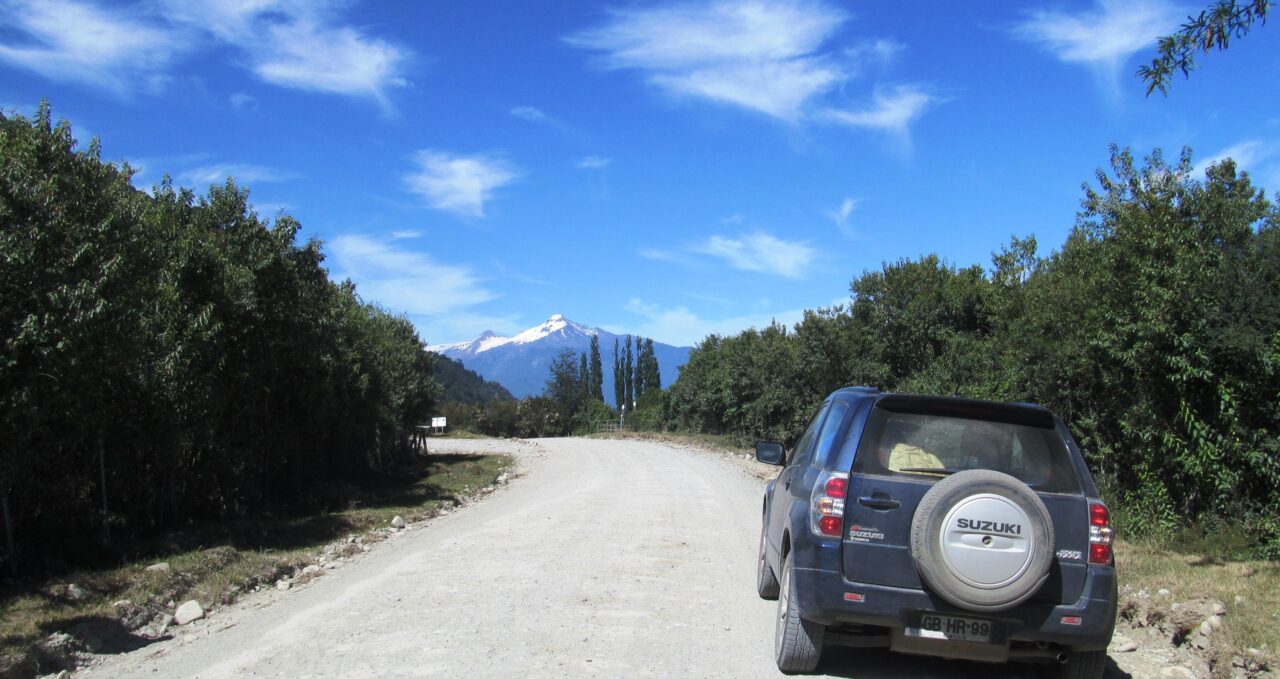
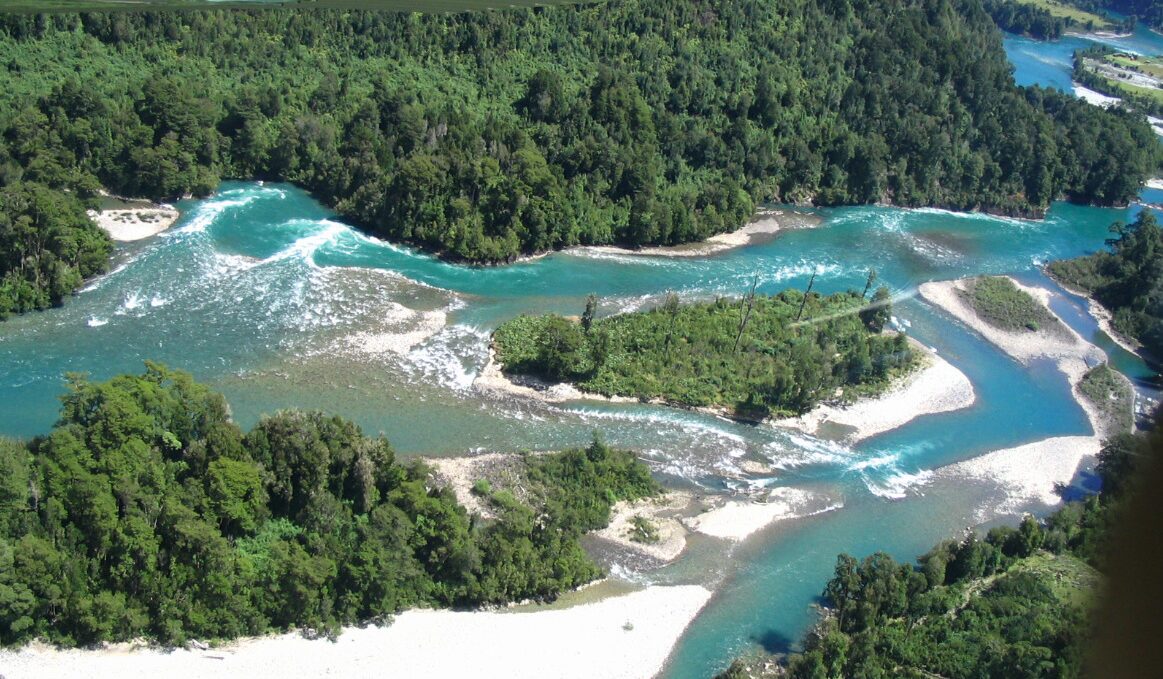
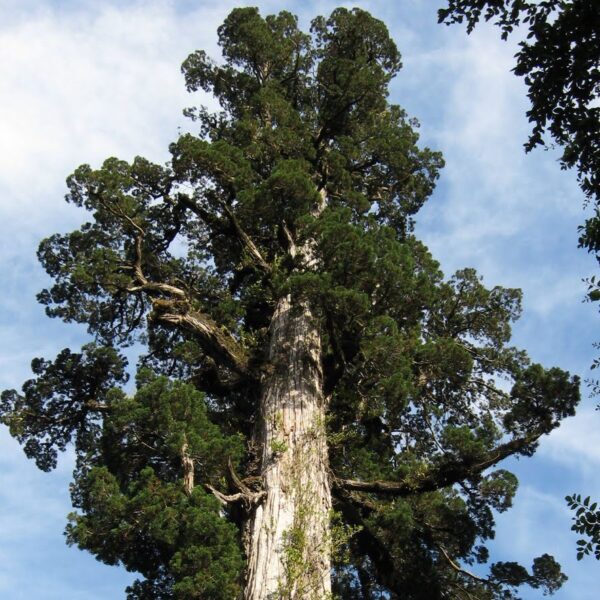
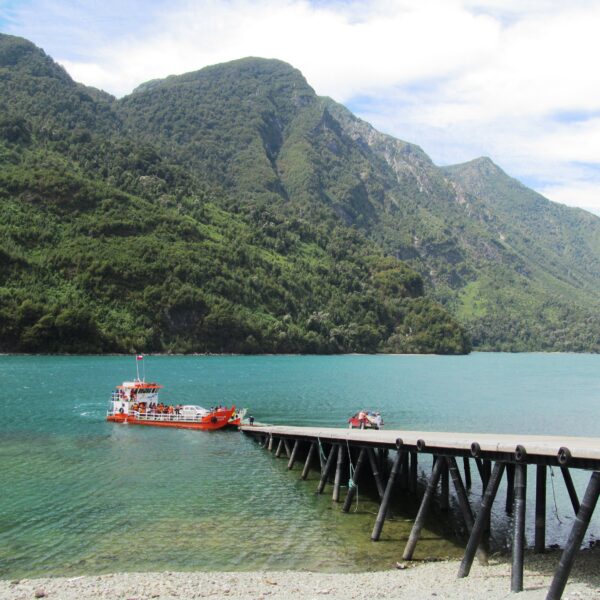
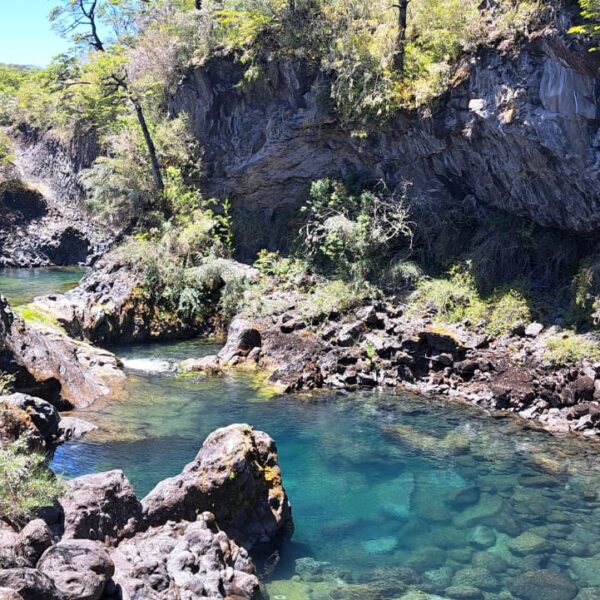
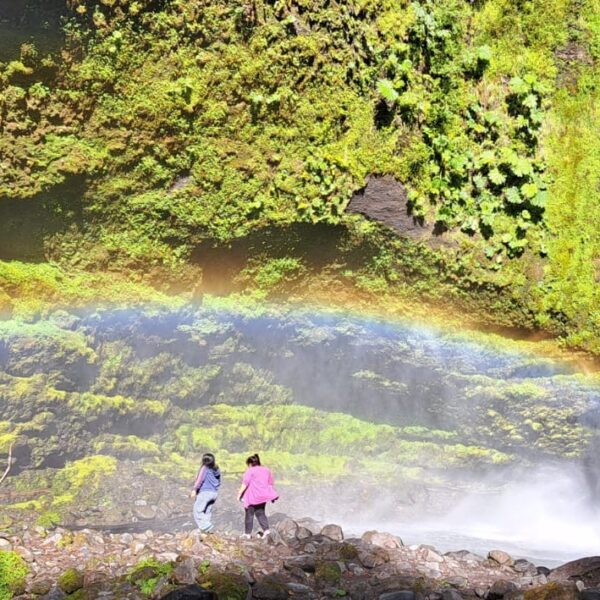
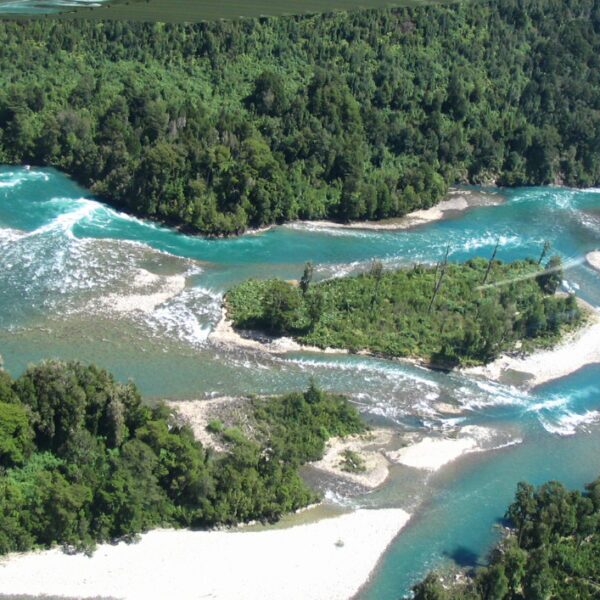
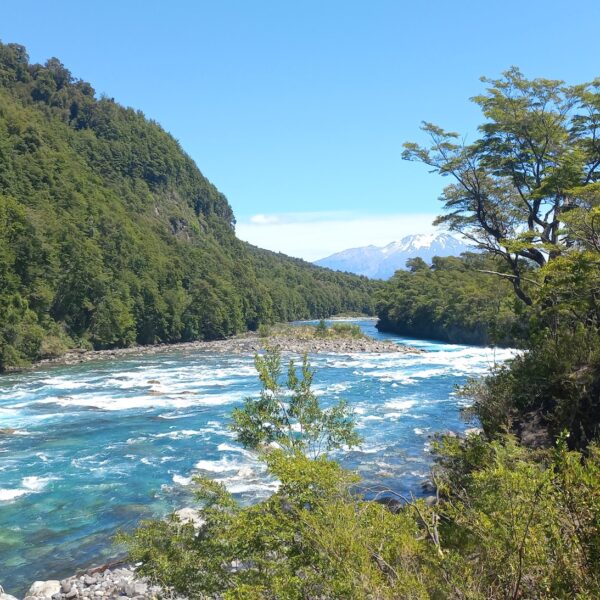
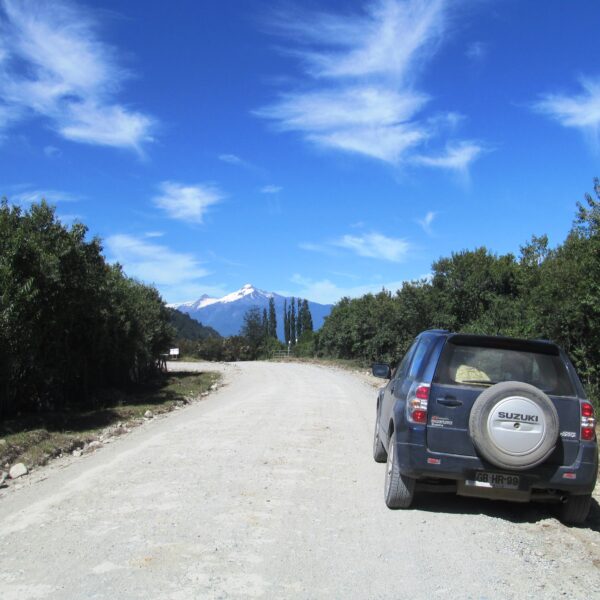
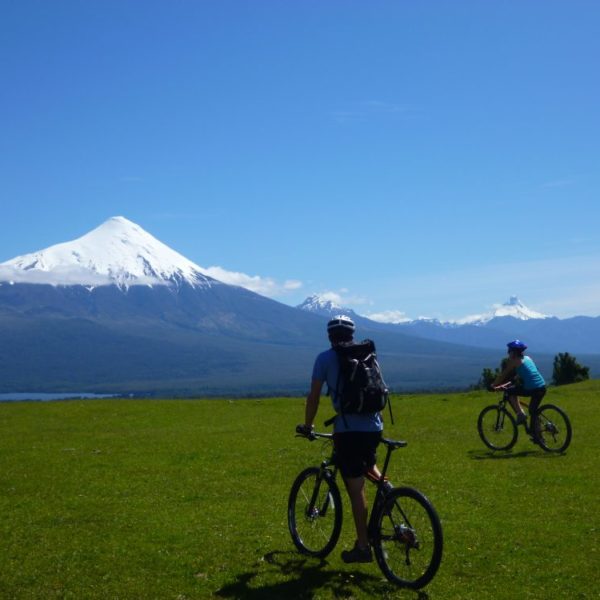
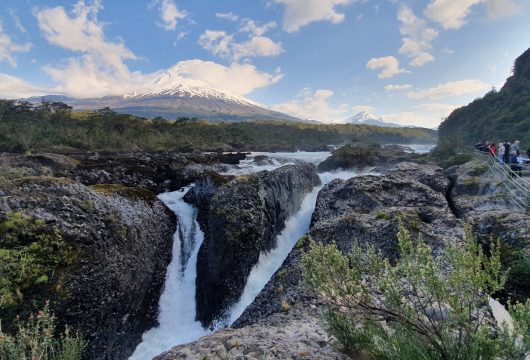
 a Tailor Made Tour
a Tailor Made Tour 